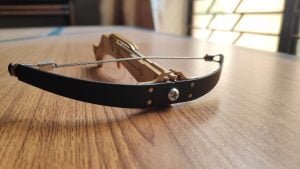 First off, don’t think that using a crossbow for fishing will get rid of the need for a fishing license. Fishing with a crossbow is just as regulated as traditional fishing. However, you do have to admit that it is more tactical and fun. Now that we got that out of the way, let’s look through the basics of bow fishing.
First off, don’t think that using a crossbow for fishing will get rid of the need for a fishing license. Fishing with a crossbow is just as regulated as traditional fishing. However, you do have to admit that it is more tactical and fun. Now that we got that out of the way, let’s look through the basics of bow fishing.
The basics
First of all, you should consider taking some training lessons because bow fishing with a crossbow is extremely different from fishing with a rod or hunting mammals with a crossbow. Taking a course is also important because it teaches you how to take care of your crossbow. And you’ll also learn how to react adequately in different situations.
With a few simple modifications, you can adapt most regular crossbows into a fishing crossbow in just a few easy steps. First and foremost, you might be interested in a cocking device, as mentioned on Fisherpants.com.
Cocking safety and draw weight
The cocking stirrup is the part of the cocking device that holds your arrow’s head. Place it on the ground and hold it down with your foot to ensure that it remains in the proper position while you’re cocking the arrow.
Now pull each of the strings connected to each end of the curved limbs with both hands and ensure that they’re balanced properly. Otherwise, they might go off-center and heavily influence your targeting.
Next, wait until you hear a clicking sound and place the arrow between the strings. Most modern crossbows have simplified safety features and instruction manuals that will guide you through the process and the unit’s specific quirks. While they are far more expensive than traditional crossbows, it might be worth investing in them if you’re serious about it.
What arrows should you get?
Arrows come in all shapes and sizes, but getting the right one is tricky. It depends on the power of your cocking device and of your crossbow. Normally, you will find fiberglass, aluminum, carbon, and even carbon aluminum arrows on the market. For beginners, we recommend avoiding aluminum arrows and going for carbon aluminum or carbon arrows.
They have less tendency to break, but they are also slightly heavier. This will make aiming a little more tedious, but it is better than wasting money on arrows that you might easily break the first few tries. As for the weight and length, you should check your crossbow manufacturer’s website or instruction manual to see what is right for you.
Take note of the speed
To determine the speed at which your arrow will travel, you need to measure the length of the power stroke. Longer fishing crossbows can shoot up to 400 miles per second. However, the length and weight of the arrow reduce the speed. For an accurate measurement, you should read the crossbow’s owner manual.
Hunting big fish will require you to shoot arrows with more brute strength even though it means sacrificing speed. Tiny fish, on the other hand, should be hunted with speed and less with penetrating power.
Final thoughts
Crossbow fishing can be a lot of fun once you get the hang of it. We hope that the information found in this article has given you a basic understanding of how everything works. We still recommend getting some actual training, however. No online guide will ever suffice when it comes to such activities.
In any case, we wish you the best of luck in fishing with your crossbow!

